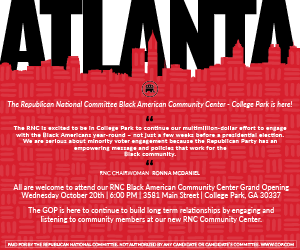on
Is Social Media Dead? Filmmaker, Samuel Wofford thinks so. 2020 has felt like one big “Black Mirror” episode, and for a lot of creatives in Atlanta, it has been challenging to create. While more people are spending time online, some creators fear that people will not see their art because of many social media apps’ algorithms. To combat that, filmmaker Samuel Wofford created ‘1991’, an exhibition that reminds you of a teenage boy’s bedroom in the ’90s and catapults the audience back in time when we were free from social media norms.
On your website, you mentioned that SMID is a movement that encourages artists to free themselves from the limitations and control that social media holds. As a creative, what negative impact has social media had on you?
Samuel Wofford: To be honest, I feel like there’s depreciation for art. It’s so many artists that are creative and continually pouring their art into this platform. In a best-case scenario, your art could reach a person, but that individual has so many posts on their timeline. The art you put so much time and intellect into winds up being compared next to a photo of a vacation trip.
For example, when you go to a museum, your mind switches. It’s like, “Oh, let me find appreciation; let me find meaning.” But now we see so much art on social media, it just depreciates. For example, if we talked about algorithms, I wanted to post the last clip of this exhibition on social media and promote it. However, the clip had Black Lives Matter in it, and Instagram wouldn’t allow me to do so. I have to adhere to what social media tells me is the appropriate way to create art. Art is speaking to people’s souls and should not be censored.
So aside from censorship and the algorithms, l can barely connect with my audience. The real question becomes, should we be putting this much effort into posting, hoping to connect with somebody and get a like? That is not necessarily supporting art, but people can come out and experience it in person. That’s what art is about. Art is about changing lives.
With this exhibition, how do you plan to push back against societal norms?
Samuel Wofford : My first step of pushing back against societal norms was to go back to the old ways– gritty and underground. That’s why I shoot things on a Super Eight. Super Eight is a camera created for home videos in the 60s and 70s. I’m going back to the roots of things because we try to compete with the industry when it’s impossible. After all, we don’t have the resources to do so, whether it’s the market, the resources, or even the financial stability to go up against these multi-million dollar companies. The second step is not to post any of my artwork on social media.
With refusing to post any of your work on social media, how do you aspire to connect with your audience? What do you want your audience to gain from visiting an exhibition like this?
Samuel Wofford : Right now, I have so much to say but have to go alternative routes. My next exhibit might be a performance where I have somebody pop out of nowhere in a crowd and start performing a monologue of some poem or anything. Everything I create is really from my pain. Everything is from my struggle. This is therapy for me, and every time I create, I free myself from something.
In terms of your art, what positive things would you say you’ve gained from social media if anything?
Samuel Wofford : It made my execution of certain work able to be seen by numerous people at one time. This statement is based on a time years ago when algorithms weren’t as bad. That’s the beauty of it– the fact that I could connect. I could potentially connect with so many people. Now, I feel like social media’s become like a pyramid scheme. Everything I’m saying about social media is strictly related to arts, the artist, and how to distribute an exhibition and arts. I’m not telling people to get off of social media as a whole; I’m just saying place value in your art.
I noticed a clip of Rodney King’s beating and other pins of historical and pop culture moments in the video montage. What else does ‘1991’ symbolize for you?
Samuel Wofford : So surface level, 1991 is the year that I was born. And I look at this exhibit as the genesis of me, created not only as a filmmaker but as an artist. Rodney King was the first big event that I knew growing up that occurred. I was born months after it happened, and it’s like history is now repeating itself. For this piece, I wanted to show how, through all these different generations, time is the only thing that’s changed. But the real heart of this country has remained the same.
To get in contact with Samuel Wofford and find out more about his next exhibit, visit www.socialmediaizdead.com
Join our email list to stay connected.






